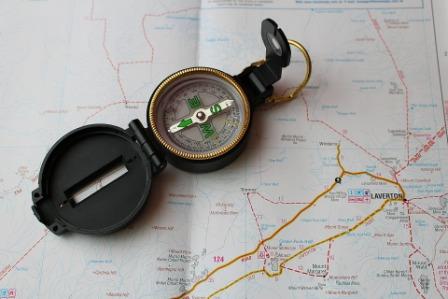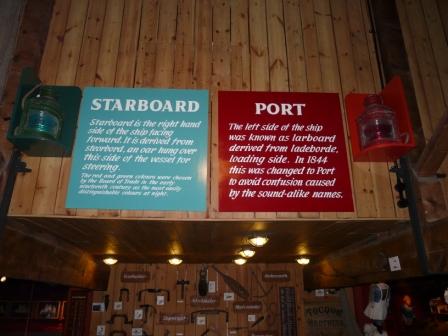The compass error should be checked each watch and on every new course to measure the error of the gyrocompass, which is the angle the gyro north makes with the True north to establish trends in deviation on different courses at varying latitudes.This is important because should the gyro compass fail, this information will be needed to set courses using the magnetic compass. It is worth noting that some modern coasters only have a magnetic compass (they do not have a gyrocompass).
This is important because should the gyro compass fail, this information will be needed to set courses using the magnetic compass. It is worth noting that some modern coasters only have a magnetic compass (they do not have a gyrocompass).
Different methods of finding compass error
- By Azimuth of a Celestial Body: This has been discussed in detail in a separate module. Sun, selected stars, moon and planets can be used.
- By Amplitude of a Celestial Body: Usually, the sun or moon is used for taking amplitude which is explained in detail in a separate module. The Amplitude is taken when the body is on the true horizon. Stars and planets being small and dim when are on the horizon are not suitable.
- When at Berth: The difference between the observed direction of the jetty and the charted direction when the ship is fully alongside will give the compass error. Caution: This will only be accurate if the vessel is close to the jetty throughout its length and the jetty extends to the full length of the vessel. This may not be accurate if either the bow or stern is away from the jetty or the jetty is not complete. In some ports, the ship may never be alongside the berth due to various reasons and hence this method of taking an error should be double checked as soon as possible after departure by either taking an azimuth of a celestial body or by taking a transit bearing.
- Transit bearings: This is a line on the chart where an observer would see two identifiable objects in line. A bearing taken when both the objects are in line can be used to determine the gyro and compass errors by comparing charted and observed bearings.
- Leading Lights: This is similar to transit bearings where two identifiable objects are used to draw a line of bearing on the chart. These bearing lines are used to indicate track to be followed when approaching a port or a channel. The difference between the charted bearing and the heading of the ship when on the leads can be used to determine the error on both gyro and magnetic compass. BEWARE OF PARALLAX ERROR WITH THIS METHOD.
- Horizontal sextant angles: When used to plot ship’s position, the observed bearing of one of the objects used for plotting the position when compared to the bearing line drawn on the chart from the observed ship’s position to the same object would give the compass error.





Please send to me how must be done external test of HF/MF